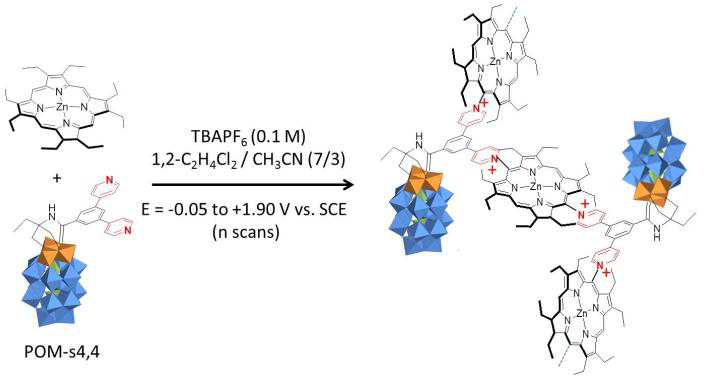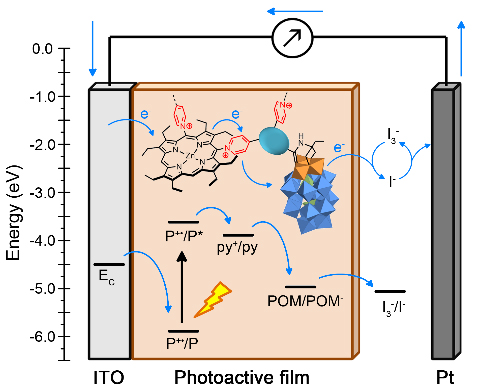报告题目:Design of New Oligoporphyrins and Porphyrin-Polyoxometalate Complexes for the Photoelectrochemical Energy Conversion and for the Photocatalysis
报 告 人:Prof. Laurent. Ruhlmann
Institut de Chimie,Université de Strasbourg
报告时间:2016年10月30日(星期日)上午9:00
报告地点:无机超分子楼一楼圆形报告厅
报告摘要:
Porphyrins and porphyrin-containing materials have attracted considerable attention in recent last decades. A number of researchers have attempted to construct artificial light-harvesting systems that provide important contributions not only to understand the natural systems but also to mimic nature in creating new efficient light-harvesting systems for energy conversion.
In this context, the presentation will be devoted to multiporphyrin systems obtained by electrosynthesis from oxidation of porphyrin macrocycle. Indeed, these cationic species have an electrophilic character, leading as first type of reactivity to reactions with nucleophilic compounds. Thus, nucleophilic substitutions can be performed onto free carbons (carbons with one H in meso- or -positions) of porphyrin macrocycles, allowing not only an easy grafting of substituents onto porphyrins, but also the synthesis of oligomers of porphyrins by using compounds having two nucleophilic sites (4,4’-bipyridine, diphosphine, etc.) as spacers.1 Furthermore, switch system using Py-BTE (1,2-bis[2-methyl-5-(2-pyridyl)-3-thienyl]cyclopentene)) can be obtained via this method of electrosynthesis.
Polyoxometalates (POMs) are anionic metal oxide molecular analogues presenting a great diversity of structures and applications. In particular, the development of hybrid polymers incorporating POMs is a promising approach to elaborate new functional materials. To expand the practical applications, their association to a visible-light photosensitizer is so far a prerequisite since POMs themselves are mainly photoactive in the UV domain of the solar spectrum, which strongly limits the use of POMs in solar visible light conversion materials.
From this angle, we have formed new POMs-porphyrin complexes via electrostatic, coordination or covalent interactions. We have also developed a method of electropolymerization of POMs based on nucleophilic attack onto the electrogenerated porphyrin dications.1-2The formation of hybrid POM-porphyrin copolymeric films (Fig. 1) can be obtained by the electro-oxidation of porphyrin in the presence of the POM bearing two pyridyl groups (Py-POM-Py).3This process is feasible for various type of POMs such as Dawson, Lindqvist or Keggin type POMs.4-6


Fig 1. Formation of POM-porphyrin copolymer. Fig 2. Energy-level diagram.
A second methodology is also proposed to form hybrid POM-porphyrin films: first the formation of cationic polyporphyrin electropolymer. Then, by metathesis reaction, the (partial) exchange onto the surface of the initial counter ions by the POMn-. All the electropolymers have been studied by spectroelectrochemistry (UV-vis-NIR-IR), EQCM, AFM, XPS and impedance measurements.7Their photovoltaic performances have been investigated by photocurrent transient measurements under visible-light illumination (Fig. 2).8-10
1) a) Giraudeau, A.; Ruhlmann, L.; El-Kahef, L.; Gross, M. J. Am. Chem. Soc. 1996, 118, 2969–2979. b) Ruhlmann, L.; Giraudeau, A. Chem. Commun. 1996, 2007–2008. c) Ruhlmann, L.; Lobstein, S.; Gross, M.; Giraudeau, A. J. Org. Chem. 1999, 64, 1352–1355. e) Schaming, D.; Marggi-Poullain, S.; Ahmed, I.; Farha, R.; Goldmann, M.; Gisselbrecht, J.-P.; Ruhlmann, L. New J. Chem. 2011, 35, 2534–2543. f) Ruhlmann, L.; Gross, M.; Giraudeau, A. Chem. Eur. J. 2003, 9, 5085–5096. g) Schaming, D.; Xia, Y.; Thouvenot, R.; Ruhlmann, L. Chem. Eur. J. 2013, 19, 1712–1719. 2) Z. Huo, J.-P. Gisselbrecht, R. Farha, M. Goldmann, E. Saint-Aman, C. Bucher, L. Ruhlmann, Electrochimica Acta, 2014, 122, 108. 3) D. Schaming, C. Allain, R. Farha, M. Goldmann, S. Lobstein, A. Giraudeau, B. Hasenknopf, L. Ruhlmann, Langmuir, 2010, 26, 5101. 4) I. Azcarate, I. Ahmed, R. Farha, M. Goldmann, X. Wang, H. Xu, B. Hasenknopf, E. Lacôte, L. Ruhlmann, Dalton Trans. 2013, 42, 12688. 5) Z. Huo, I. Azcarate, R. Farha, M. Goldmann, H. Xu, B. Hasenknopf , E. Lacôte, L. Ruhlmann, J. solid State Electrochemistry, 2015, 19, 2611. 6) Z. Huo, D. Zang, S. Yang, R. Farha, M. Goldmann, B. Hasenknopf, H. Xu, L. Ruhlmann, Electrochimica Acta, 2015, 179, 326. 7) Submitted. 8) I. Ahmed, R. Farha, M. Goldmann, L. Ruhlmann, Chem. Comm. 2013, 49, 496. 9) I. Ahmed, R. Farha, Z. Huo, C. Allain, X. Wang, H. Xu, M. Goldmann, B. Hasenknopf, L. Ruhlmann, Electrochimica Acta, 2013, 110, 726. 10) I. Azcarate, Z. Huo, R. Farha, M. Goldmann, H. Xu, B. Hasenknopf, E. Lacôte, L. Ruhlmann, Chem. Eur. J. 2015, 21, 8271.